Bitcoin’s bull run appears to be in full swing amid a broader consensus that 2021 could bring more significant gains. The question now for market participants is how high the cryptocurrency could go and, conversely, which levels could act as support levels or potential entry points for investors looking to buy.
For long-term investors, continuing to “HODL” coins and trusting forecasts for a bitcoin price rally to over $100,000 by prominent observers is a fairly straightforward way to play the market. Yet, short-term speculators and leverage traders, who rely more on technical analysis to identify price targets, resistance and support levels, may find it difficult to keep doing what they’ve been doing without previous price levels to provide obvious guideposts.
That’s because bitcoin’s latest move above $20,000 has pushed the cryptocurrency into uncharted territory. As the top cryptocurrency has never been traded above $20,000 before, there are no “higher price lows” or “lower price highs” that could be considered potential bull/bear targets or support/resistance levels.
In such a situation, Fibonacci extensions and retracements can help identify key price levels, according to William Noble, a chief market technician at Token Metrics.
Fib extensions reveal $26,000 as the next target
The $26,000 level “is the 38.2% extension of the move from the March bottom to November highs around $19,000,” Noble told CoinDesk during a Zoom interview on Wednesday. “That’s the first target for bitcoin.”
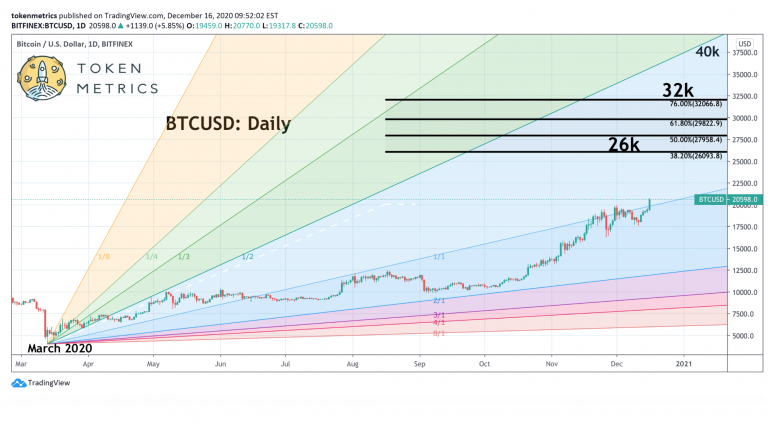
If prices break above $26,000, the focus would shift to the 61.8% extension at $29,822. According to Noble, the 76% extension at $32,000 could act as resistance or serve as a potential price target.
The Fibonacci extension for an uptrend is drawn by joining three points – the lowest price or the point of origin of the bull trend, a major price high, and the low of subsequent pullback bounce. That will generate Fibonacci extension levels of 23.6%; 38.2%, 50.0%, 61.8%.
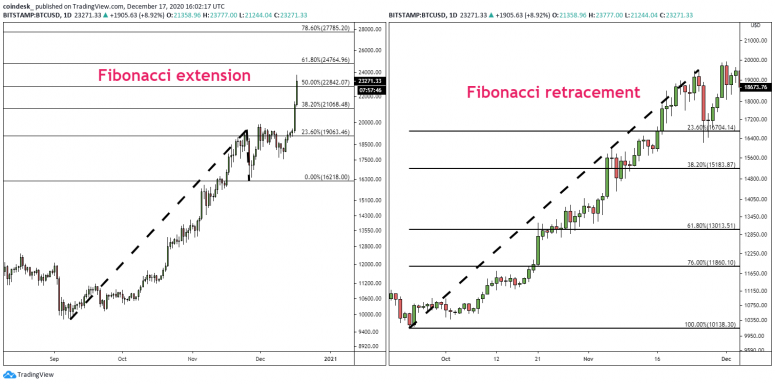
Meanwhile, the Fibonacci retracement on an uptrend is drawn by connecting the low and high points to get 23.6%, 38.2%, and 61.8% retracement levels.
These percentages are based on the Fibonacci sequence – a series of numbers beginning from 0 and arranged so that any particular number of the series is simply the summation of the previous two numbers. For instance, 0, 1, 1, 2, 3, 5, 8, 13, 21, 34, 55, 89, 144, 233, 377 and so on.
A closer look at the sequence tells us that every number gets closer and closer to 61.8% of the following number. Further, every number gets closer to the 38.2% of the number two positions to its right and 23.6% of the number three positions to the right of it.
That’s how retracements are calculated. Meanwhile, working the sequence in the reverse order gives extension levels. Traders don’t need to know the formula or make calculations, as a charting software or platform like TradingView will do it for them.
The challenge lies in picking the most relevant price points while drawing Fibonacci extension and retracement levels. “It’s more of an art than science,” Noble said.
Fib extensions in 2017
Fibonacci tools served the purpose in 2017 when bitcoin traded in uncharted territory for 10 months.
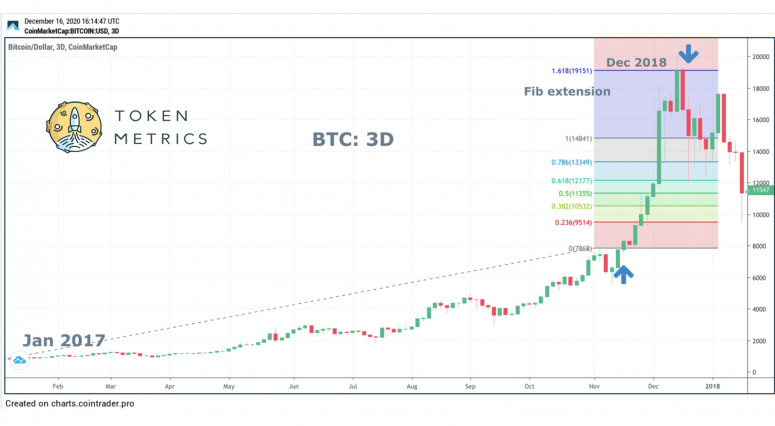
The cryptocurrency rose to fresh record highs above $1,200 in February and peaked at $19,783 – just above the 161.8% Fibonacci extension (extreme extension) of the move higher from January lows to November highs.
“I’ve never seen anything extend that much, but it did extend 1.618 all the way up to near $20,000,” quipped Noble, adding that “Fibonacci extensions would have been helpful if you were buying breakouts in 2017.”
Many analysts are expecting bitcoin to chart a 2017-like meteoric rally in 2021. However, Noble believes it could play out in the coins associated with decentralized finance (DeFi).
When asked about the level to watch for during potential pullbacks, Noble said the 61.8% retracement “might serve well in the alternative cryptocurrencies and DeFi universe coin.”
Ignore the RSI
“The widely tracked relative strength index (RSI) and other momentum indicators like Stochastic are useful in a range trade and not necessarily in a trend,” Noble said.
Newbies and amateur traders often misread the above-70 or overbought reading on the 14-day RSI as a sign of bearish reversal. In reality, the indicator can and does stay overbought longer than sellers can stay solvent, to paraphrase economist John Maynard Keynes.
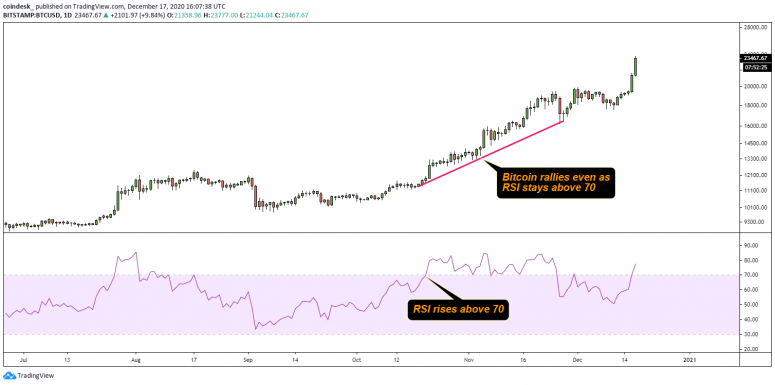
For instance, bitcoin rallied from $11,900 to $19,000 in the four weeks leading up to Nov. 24 despite RSI signaling overbought conditions. A similar pattern was observed on the daily and weekly charts during the 2017 bull run.
“I don’t know if RSI is going to come into play until you get to one of these [Fibonacci] targets,” Noble said. “People are having a hard time with bitcoin’s current rally because it’s behaving like equities. It goes up, it sits and goes up again.”
Other tools
Traders can also use Gann fans, which are based on the idea the market is geometric and cyclical, and there are pivot points to mark support and resistance levels.
Keeping a close track of changes in the options open interest could also help identify price targets.
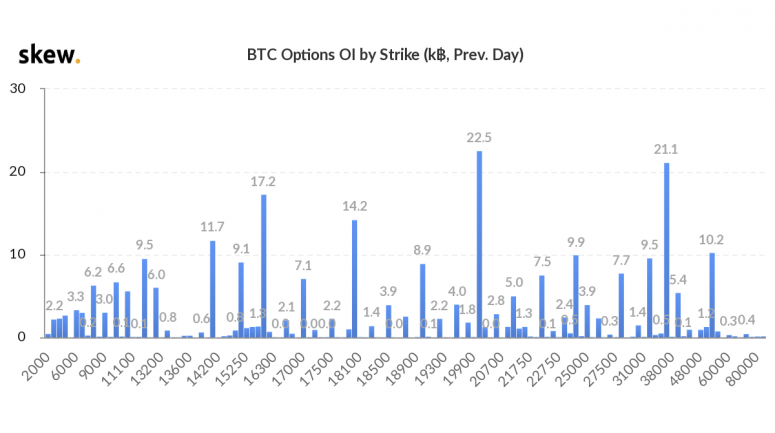
At press time, options at $20,000, $24,500, and $36,000 strikes show significant buildup of open interest or open positions. Bitcoin is currently trading near $23,450, having hit a new lifetime high of $23,77 during the European trading hours.








